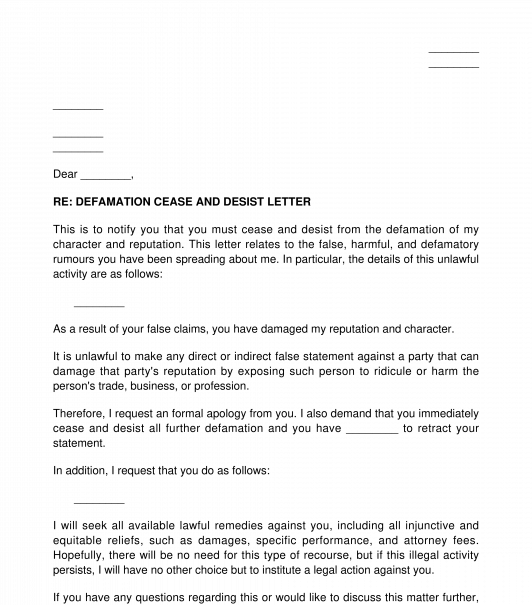 19/10/2025
19/10/2025

Answer a few questions and your document is created automatically.

Your document is ready! You will receive it in Word and PDF formats. You will be able to modify it.

 19/10/2025
19/10/2025
 Word and PDF
Word and PDF
 1 page
1 page



The Defamation Cease and Desist Letter is a written notification that warns a party to cease and desist from defamation of the character and reputation of another party. Defamation is the publication or spread of false, malicious, and damaging statements about another party.
For defamation to exist, the following elements must be present:
How to use this document
Rather than instituting legal action, the Defamation Cease and Desist Letter should be the first step to resolve issues relating to defamation. This document contains the following information:
After completing this form, it should be printed and signed by the party sending the letter. The document may be sent as a letter or an email.
After this, the sender should wait for the response of the offending party. If the offending party satisfies the demands of the sender and retracts the statement, the matter can be settled without seeking legal recourse. However, if the recipient willfully refuses to comply with the notice, the sender can pursue any available legal remedy, such as instituting an action in court and seeking injunctions, damages, and other equitable reliefs.
Applicable law
Defamation is also a criminal offence under the Nigerian Criminal Code Act.
How to modify the template
You fill out a form. The document is created before your eyes as you respond to the questions.
At the end, you receive it in Word and PDF formats. You can modify it and reuse it.
Defamation Cease and Desist Letter - FREE - template
Country: Nigeria